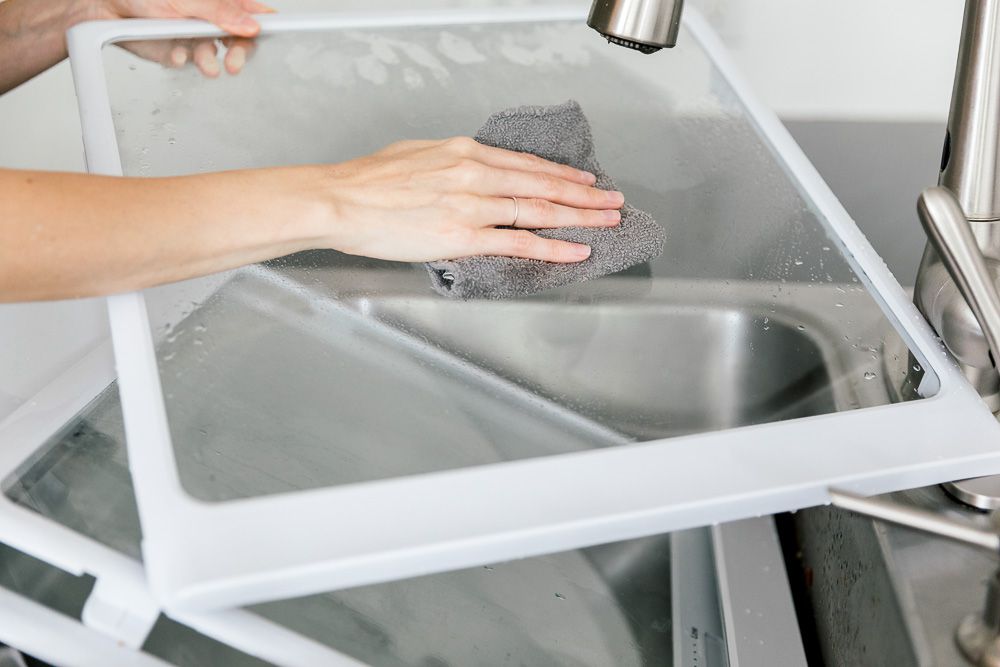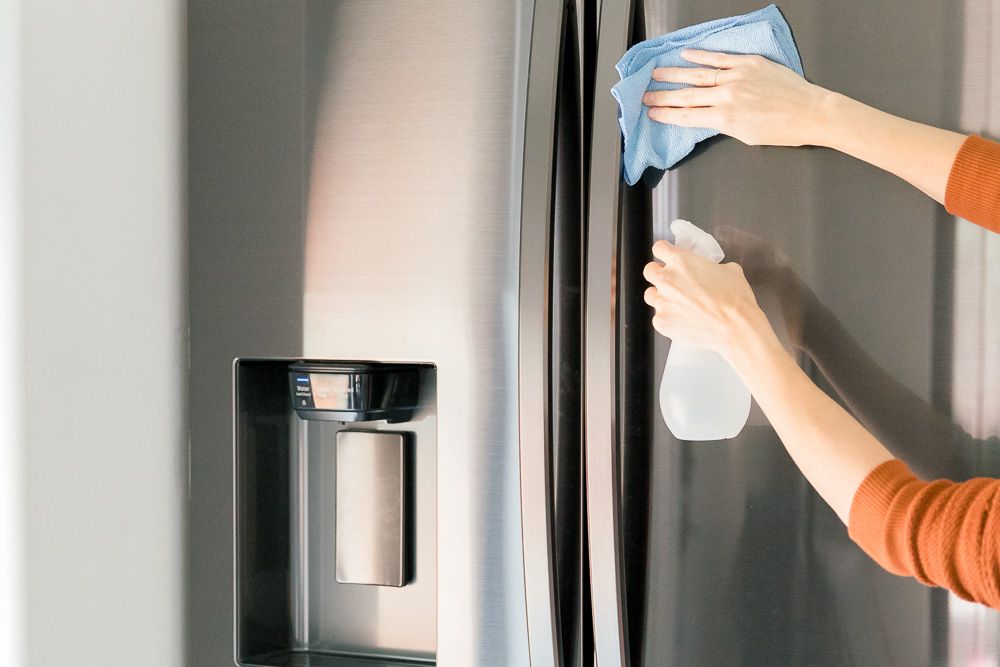Revitalize Your Refrigerator: A Comprehensive Guide to Refrigerator Cleaning. The refrigerator is the heartbeat of the kitchen, preserving our food and ensuring its freshness. However, over time, it can become a breeding ground for bacteria and unpleasant odors. Regular refrigerator cleaning not only enhances its efficiency but also promotes a healthier living environment. In this comprehensive guide, we’ll walk you through the step-by-step process of cleaning your refrigerator for a spotless and odor-free appliance.

- Empty and Assess:
Begin by unplugging the refrigerator to save energy and ensure safety during the refrigerator cleaning process. Empty its contents, placing perishables in a cooler to maintain their freshness. Take this opportunity to assess each item, discarding expired or questionable items to declutter your fridge.
- Remove Shelves and Drawers:
Most modern refrigerators come with adjustable shelves and removable drawers. Take advantage of this feature by carefully removing them for a thorough cleaning. Submerge the shelves and drawers in warm, soapy water to loosen any grime, allowing for easier scrubbing later. - Clean Door Gaskets:
Often overlooked, the door gaskets play a crucial role in maintaining the refrigerator’s temperature. Wipe them down with a solution of mild soap and water, ensuring they remain pliable and free from debris. Check for any visible damage, as damaged gaskets can compromise the efficiency of your refrigerator. - Wipe Down Interior Surfaces:
Armed with a mixture of equal parts water and white vinegar, use a soft cloth or sponge to wipe down the interior surfaces of the refrigerator. Pay extra attention to spills, sticky residue, and any mold or mildew. The acidity of vinegar helps neutralize odors and disinfect surfaces. - Scrubbing Time:
Return to the shelves and drawers soaking in soapy water. With a gentle scrub brush or sponge, tackle any stubborn stains or dried spills. For tougher stains, a mixture of baking soda and water can act as a mild abrasive without scratching surfaces. Rinse thoroughly before placing them back in the refrigerator. - Exterior Cleaning:
Shift your focus to the exterior of the refrigerator cleaning. Wipe down the surface with a mixture of water and mild dish soap. Pay attention to handles, which can harbor bacteria from frequent use. For stainless steel finishes, use a specialized cleaner to maintain its shine without causing damage. - Clean the Condenser Coils:
The condenser coils are responsible for expelling heat from the refrigerator. Over time, they can accumulate dust, affecting the appliance’s efficiency. Using a vacuum cleaner with a brush attachment, carefully remove the dust from the coils. This simple step can significantly improve energy efficiency and prolong the life of your refrigerator. - Freshen with Natural Odor Absorbers:
Before restocking your refrigerator, consider placing natural odor absorbers such as baking soda or activated charcoal. These substances help neutralize odors and keep your fridge smelling fresh. Replace them every few months for continued effectiveness. - Regular Maintenance Tips:
To avoid deep cleaning sessions, adopt regular maintenance habits. Wipe up spills promptly, check for expired items weekly, and be mindful of strong-smelling foods that can permeate throughout the fridge. Rotate items to ensure even cooling and prevent any items from being forgotten.

Conclusion:
Refrigerator Cleaning not only contributes to a healthier kitchen but also extends the lifespan of your appliance. By following this comprehensive guide, you’ll not only achieve a sparkling clean refrigerator but also create a hygienic environment for your food storage. Regular maintenance and a proactive approach to spills and odors will keep your refrigerator running efficiently for years to come.
